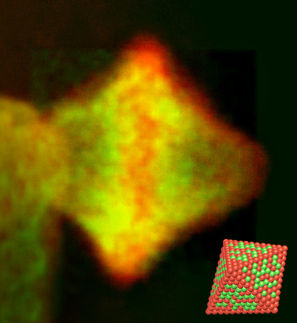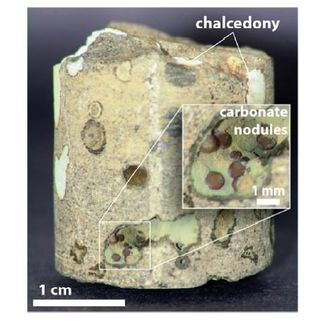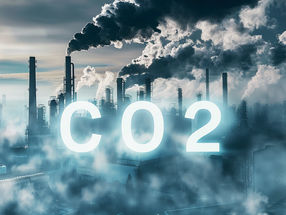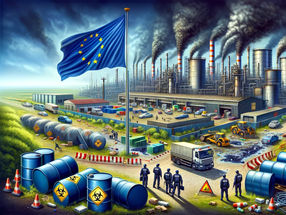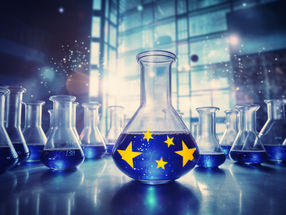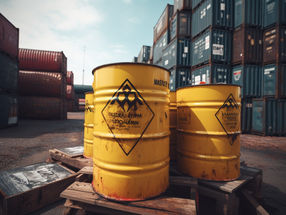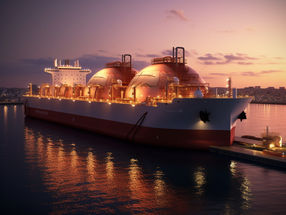CO2 emissions could violate EPA ocean-quality standards within decades
In a commentary a large team of scientists state that human-induced carbon dioxide (CO2) emissions will alter ocean chemistry to the point where it will violate U.S. Environmental Protection Agency Quality Criteria [1976] by mid-century if emissions are not dramatically curtailed now. This is the first recognition that atmospheric CO2 emissions will cause ocean waters to violate EPA water quality criteria.
The paper also says that carbon-dioxide induced "changes in ocean chemistry within the ranges predicted for the next decades and centuries present significant risks to marine biota" and that "adverse impacts on food webs and key biogeochemical process" would result.
An international team of twenty five leading researchers described the evidence to date regarding the effects of CO2 emissions on the acidity of the world's oceans.
"About 1/3 of the CO2 from fossil-fuel burning is absorbed by the world's oceans," explained lead author Ken Caldeira from the Carnegie Institution Department of Global Ecology. "When CO2 gas dissolves in the ocean it makes carbonic acid which can damage coral reefs and also hurt other calcifying organisms, such as phytoplankton and zooplankton, some of the most critical players at the bottom of the world's food chain. In sufficient concentration, the acidity can corrode shellfish shells, disrupt coral formation, and interfere with oxygen supply. "
Most of the research today points to a future where, in the absence of a major effort to curtail carbon dioxide emissions, there will be double the atmospheric concentrations of CO2 (760 ppm) by century's end. Atmospheric carbon dioxide concentrations could reach 500 ppm by mid-century. Pre-industrial concentrations, by comparison, were 280 ppm and today's concentration is about 380 ppm.
The acidity from CO2 dissolved in ocean water is measured by the pH scale (potential of Hydrogen). Declines in pH indicate that a solution is more acidic. The U.S. Environmental Protection Agency [1976] Quality Criteria for Water state: "For open ocean waters where the depth is substantially greater than the euphotic zone, the pH should not be changed more than 0.2 units outside the range of naturally occurring variation ..." The euphotic zone goes to a depth of about 650 feet (200 meters), where light can still reach and photosynthesis can occur.
"Atmospheric CO2 concentrations need to remain at less than 500 ppm for the ocean pH decrease to stay within the 0.2 limit set forth by the U.S. Environmental Protection Agency [1976]," remarked Caldeira. "If atmospheric CO2 goes above 500 ppm, the surface of the entire ocean will be out of compliance with EPA pH guidelines for the open ocean. We need to start thinking about carbon dioxide as an ocean pollutant. That is, when we release carbon dioxide to the atmosphere, we are dumping industrial waste in the ocean."
Keeping atmospheric carbon dioxide concentrations below 500 ppm level would require a rapid global transition to a system of energy production and consumption that releases very little carbon dioxide to the atmosphere.
Other news from the department politics & laws
Most read news
More news from our other portals
See the theme worlds for related content
Topic world Synthesis
Chemical synthesis is at the heart of modern chemistry and enables the targeted production of molecules with specific properties. By combining starting materials in defined reaction conditions, chemists can create a wide range of compounds, from simple molecules to complex active ingredients.

Topic world Synthesis
Chemical synthesis is at the heart of modern chemistry and enables the targeted production of molecules with specific properties. By combining starting materials in defined reaction conditions, chemists can create a wide range of compounds, from simple molecules to complex active ingredients.
